We recall the infantry and the native company
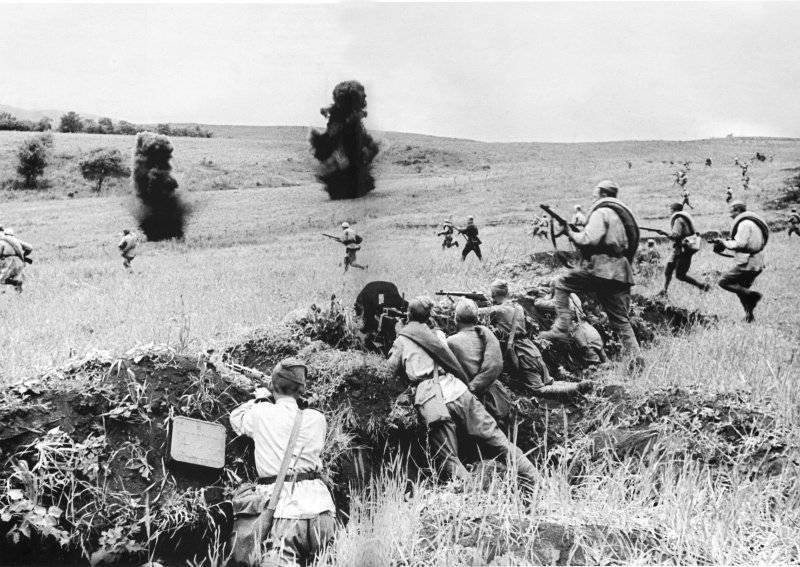
It was as if Stalin had a premonition that our army and its main branch of arms had been waiting for only a month and a half, but a fierce battle with the enemy was waiting for death and death.
The main infantry unit in the Red Army before the Second World War was the rifle division, by June the 1941 of the Red Army had 198 rifle, motorized and mountain rifle divisions. Of these, 103 divisions, that is, almost more than 73% of the total, were deployed on the western borders of the USSR on the eve of the war.
In accordance with 5 1941 / 4 approved by 100 on April, the rifle division of the main structure included 3 rifle regiments and, in contrast to infantry divisions of the armies of other countries of the world, had in its composition not one, but two whole artillery regiments and each rifle regiment, in addition to the three rifle battalions, also included an additional battery of regimental guns of 76,2-mm caliber, as well as a battery of 45-mm anti-tank guns and a battery of 120-mm mortars. The rifle battalion also had its own artillery; it was a platoon of 45-mm anti-tank guns and a company of 82-mm mortars. And even each of the division's 27 rifle companies also had its own artillery support, it had two 50-mm mortars. Thus, in the rifle division it was supposed to have 210 guns and mortars (excluding 50-mm mortars), which made it possible to classify it as a rifle artillery compound.
Prior to the mass deployment of mechanized corps in 1940, many rifle divisions of the Red Army had tank a battalion consisting of two or three companies of light tanks (up to 54 vehicles). And taking into account the presence of a car battalion in the division (more than 400 cars, in wartime - 558), the division commander had the opportunity, if necessary, to form a powerful mobile unit as part of the reconnaissance and tank battalions and a rifle regiment on artillery trucks.
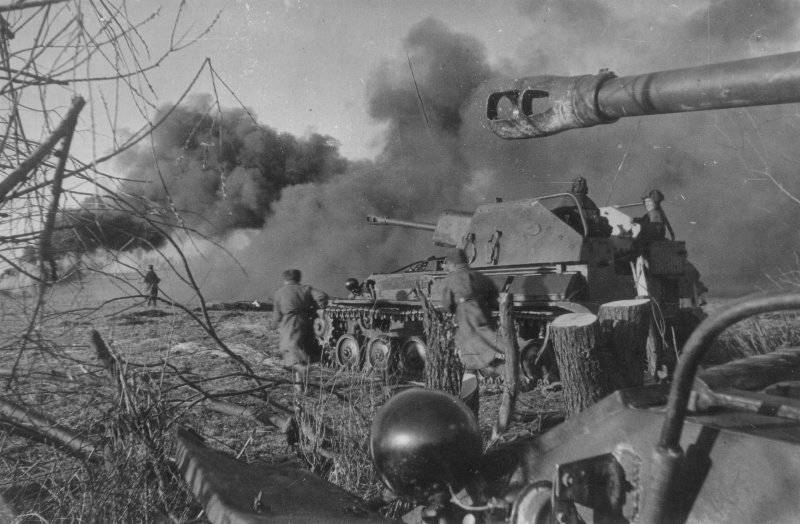
It was all conceived, seemingly, competently and intelligently, but by the beginning of World War II the tank battalions of rifle divisions had been withdrawn, and they remained only in three rifle divisions of the Trans-Baikal Military District. So in June 1941g. each of the motorized rifle divisions of the Red Army had or, more correctly, should have had a regular number of 12 thousand people, and an ordinary rifle about 14,5 thousand people fighters.
And since it was impossible to maintain all rifle divisions in the main staff number 4 / 100 for economic reasons, part of the divisions were formed in a reduced composition according to staff number 4 / 120, according to which only 27 was deployed from 9 rifle companies, and the rest were cropped (abbreviated). The division of such a composition in total in those pre-war years was about 5864 man, yes, it contained almost everything provided for by the wartime state. weapon and military equipment, however, all this division was to receive only during mobilization, only after the division commander received orders to open a special package after orders from the district headquarters, only then did the division have to accept 6000 reservists and get the 2000 horses missing to the state of wartime and around 400 cars.
From various sources, including memoirs and other literature, it is known that the average staffing of the infantry divisions of the Red Army on June 22 1941. It was: in Leningrad IN - 11 985 people, in the Baltic Special IN - 8712, in the Western Special IN - 9327, in Kiev Special IN - 8792, in Odessa IN - 8400 people.
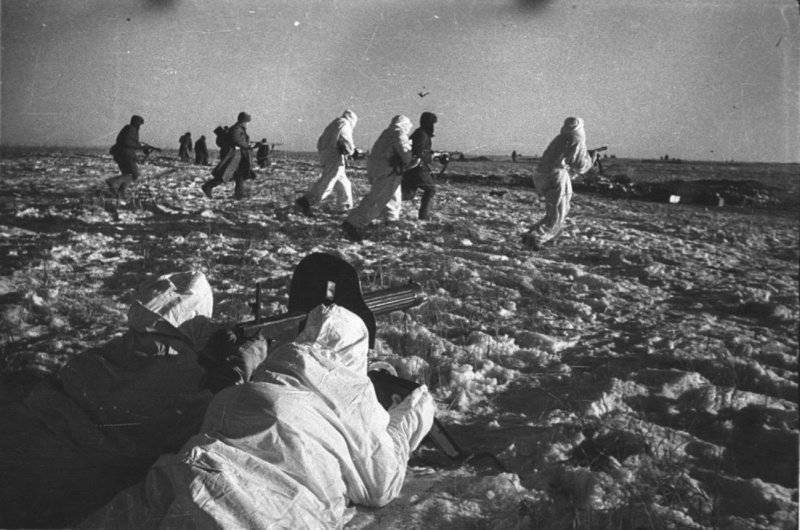
Thus, all these cadres of divisions located in western districts did not have time to mobilize in wartime states, many enemy warehouses with equipment, armament, ammunition and military equipment were captured in the first days of the war, and all these rifle battles divisions with a little more than two regiments each, but on the staff cards they were all marked as full-blooded, and these divisions carried out combat missions as having almost 14 thousand soldiers in their composition.
The Wehrmacht infantry divisions at the time of the attack on the USSR, in contrast to the Red Army SD, were mobilized in full capacity and consisted of almost 16 thousand soldiers, by the end of the war the Germans brought the number of their infantry divisions to almost 18 thousand people, thus Two or even three divisions of the Red Army fought, as a rule, against a single German infantry division.
However, if in the period from 1941 to 42, the German infantry division still surpassed the Soviet rifle division, for example, by the total number of submachine guns and machine guns threefold, and by mortars almost twice as much as personnel, then by the beginning of 1,55, this number was about equal. And at the beginning of 1943, the usual Soviet rifle division was already approximately twice as large as the German infantry in both pistols, machine guns, and mortars, with almost equal numbers of personnel in the Red Army rifle divisions by the end of the war more and more motorized, they were transplanted to imported cars, and the German Wehrmacht, on the contrary, transplanted their soldiers with their cars with cars.
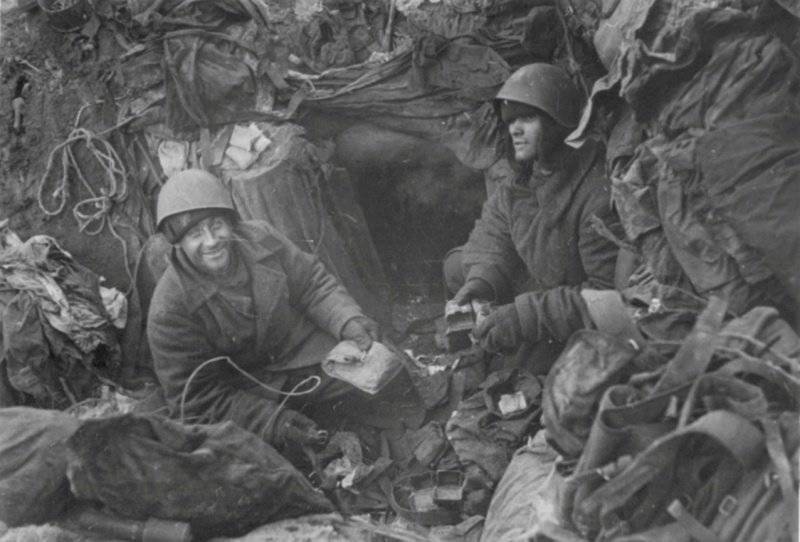
The first months of the war showed that most of the commanders of the Red Army middle and junior link had a bad idea of how to properly organize a general combat, manage their units, and organize the interaction between different branches of the military. Most interesting, according to the recollections of many front-line soldiers, those who survived the bloody summer of 41, our infantry soldier from the regular army staff was quite well prepared individually, even Germans recognized this, but the commanders, alas, at the initial stage of the war completely ceded the battlefield to the enemy , confusion, confusion and incompetence of command reigned everywhere.
The Germans, on the contrary, acted prudently, competently, their combined-arms commanders constantly displayed a reasonable initiative and fiction in battle, they especially worked out the interaction between ground forces and aviation, the Yu-87 attack aircraft constantly hung in the air, the slightest hitch of the German infantry on the ground - and at the request of a tank or infantry commander, attack aircraft with a howl rushed to the aid of their sponsored troops.
Our infantrymen had only one thing to do, it was to dig in the ground and hold on, oh, how difficult it was to hold when enemy's planes shot with impunity everyone, even single fighters, when the enemy constantly tries to get around you, when you feel insecure in your young company commander, who only he came to the regiment after accelerated graduation from the school and did not command a platoon, but received a company immediately after the killed captain, and immediately - into battle. It was not easy for the commanders of the Red Army in the summer of 41 of the year, for most of them the high command completely constrained the initiative, they simply took the right to maneuver. “Stand to the death!” And without order not to retreat, was the main order of 1941 of the year.
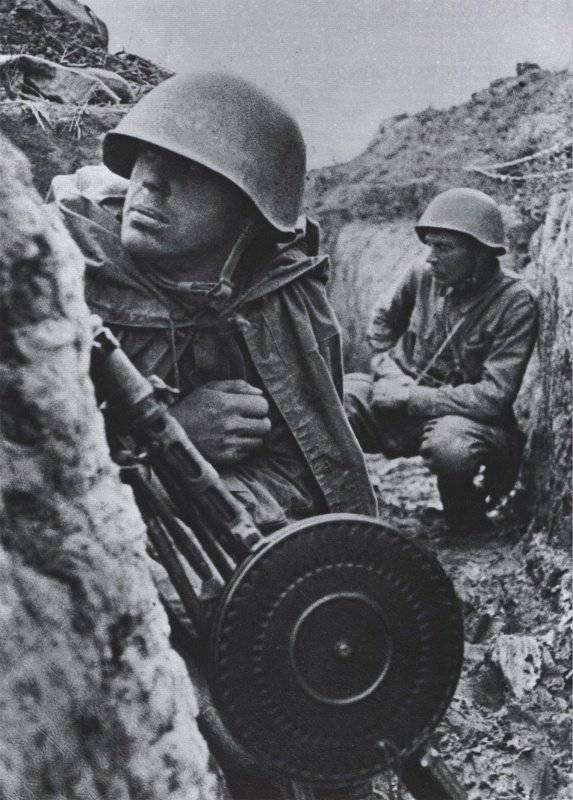
Service was at the infantry soldier, he lived in the war literally from several hours to several years, as someone lucky, someone died during the first bombing, and someone was more fortunate and managed to walk from Brest to Moscow and back from Moscow to Brest, and further to Berlin, Prague or Koenigsberg. An infantry soldier lived mostly in the open air, although if the regiment was on the defensive, then for weeks or even months the dugout became the infantry's home, and who was lucky to be with the commander, then the dugout, and so, usually between battles on the march, the fighters walked right through the fields, forests and marshes, through the impassable mud, sometimes the infantry soldier even had to take food on the go. It used to be a landing force on armor, in this case the speed of infantry movement increased dramatically, but that was later, when the Red Army moved forward, to the West.
Many fighters walked thousands of kilometers along with their personal belongings, so, for example, the weight of a combat display of a rifle platoon soldier along with equipment, personal weapons, ammunition and food "NZ" often amounted almost to 30 kg, the infantryman always bore himself a large supply of ammunition, if it was armed with a rifle, then usually the cartridges were packed in two-piece pouches of leather or kersey with a fastener on 6 rifle clips, there were also pouches of a pre-revolutionary sample - leather, with a hinged lid and side They were placed, as a rule, on both sides of the belt buckle, those fighters who were armed with machine guns, wore ammunition in special pouches, also placed on the belt, the infantryman with a light machine gun carried curb shops on the belt through Many veterans recalled that each shoulder tried to collect as much ammunition as possible before the fight, they were filled with gas bags, duffel bags, pockets, etc. It was heavier than all those in the infantry who were armed with heavy weapons, for example, calculation of st The machine gun of the ankovy machine carried almost 60 kg of iron on itself, those who were “lucky” to be at Maxim, plus boxes with curved ribbons, Degtyarev was lighter, somewhere under 40 kg, the soldiers also carried their 82-mm battalion mortars on their hands.
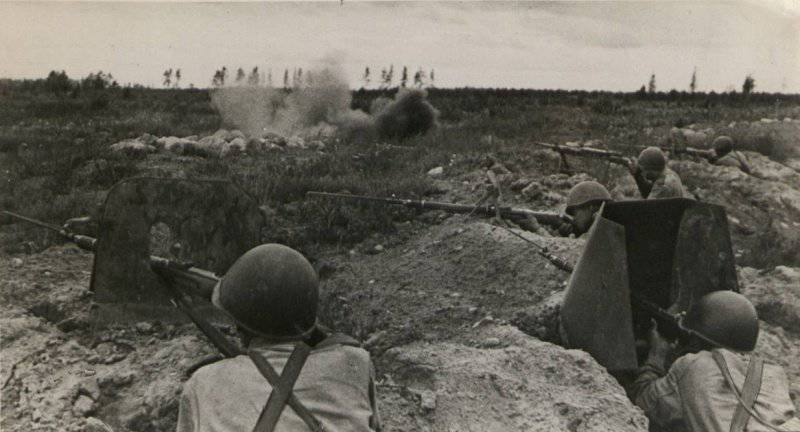
By the beginning of the Great Patriotic War, the RKKA small arms system generally met the conditions of that time and consisted of the following types of weapons: personal (pistol and revolver), individual rifle and cavalry units (magazine rifle and carbine, self-loading and automatic rifles), sniper weapons ( shop and self-loading sniper rifles), individual weapon of machine gunners (submachine gun), collective weapon of rifle and cavalry branches and platoons (light machine gun), pu Lemet divisions (heavy machine guns), antiaircraft small arms (quad machine gun installations and large-caliber machine guns), small arms tanks (tank machine gun). In addition, armed with hand grenades and rifle grenade launchers.
The most important thing in a field battle for an infantryman is to quickly and correctly take up a position and dig in, all this was done under enemy fire. For this, the soldier always had a small 50 long-sized infantry shovel stuck on his belt, it was not only the infantryman’s own engineering armament, but also his terrible weapon in hand-to-hand combat, his last argument, was used by the shoulder blades in hand-to-hand combat not only Russians, but also Germans, many probably read from Remarque "on the Western front without change", which tells how German soldiers were fired from a Frenchman E trench in bouts of World namely infantry shovels.
Another attribute of the Soviet infantry soldier, about which it should not be forgotten, is his dense overcoat, which protected him from small fragments, and while lying down he often served as a parapet, rescued at the crossing, and during the halt she could be put under her head, and the head of the fighter, as a rule, was defended by a steel helmet of the US-40, there was also one more sample of the Soviet helmet - this was the US-36 (steel helmet of the 1936 model of the year).
The defeats of the initial period of the war showed that a revision of the entire system of training of the Soviet infantry, in particular its tactics, is required.
Already at the end of 1941, the People's Commissar of Defense ordered the leaders of the “Shot” courses to prepare 1 000 commanders of infantry battalions who knew the tactics of modern combat, knew how to lead the battalion in battle and owned all the battalion’s regular weapons. This release took place in February 1942. The Soviet infantry had to learn or retrain literally on the fly, so, for example, in view of the combat experience of the first months of the war, the tactics of the infantry battle itself had to abandon the division of battle formation into a “chilling” and “strike” group; units and its weapons, and the stability of the defense gave the fire of all fire weapons. In addition, for the commander simplified control of maneuver and fire. The basis of the combat order in the attack again became the chain, to suppress the enemy used fire on the move with a rough aiming at objects or lines. Much in military science was learned from the Germans, in particular the ability to interact with tanks and attack aircraft, so the Soviet infantry, attacking in close cooperation with tanks and self-propelled guns, often began to move on the battlefield on their armor. Since 1942, in the assault of fortifications and in urban battles, assault groups and detachments were widely used, in which arrows, machine gunners, machine gunners, armor-piercers, sappers, chemists (with flamethrowers and smoke tools), calculations of mortars and anti-tank guns worked together.
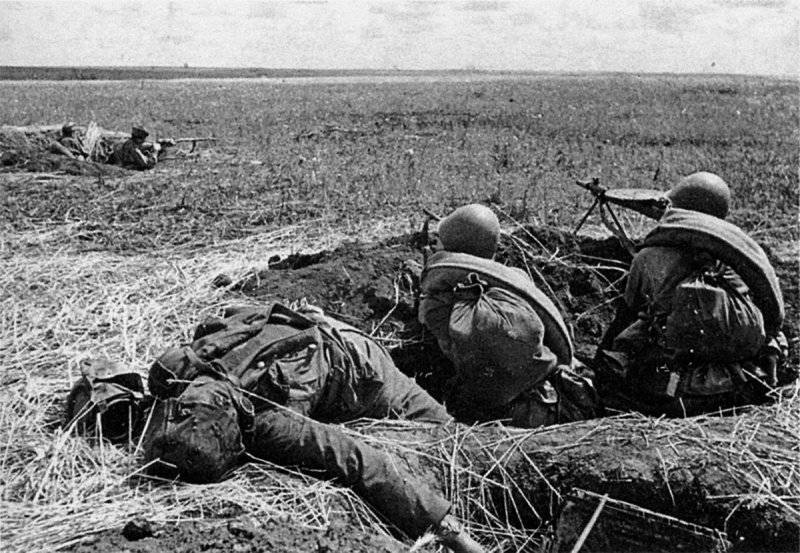
As the battle became more mobile, more mobility was expected from the infantry. It is not by chance that from the beginning of 1942, demands have been put forward to facilitate various images of small arms.
During the war, both the Soviet and German armies gradually shifted to the trench defense system, to the creation of strong strongholds and the adaptation of populated areas to all-round defense. Moreover, the main task in such a defense system was to ensure the multi-layered fire and fast maneuvering by fire weapons.
1942 of the Year (BUP-42), which embodied the experience of the war, read: "Fire, maneuver and hand-to-hand combat are the main methods of infantry action." The firearm superiority of the infantry was achieved primarily by increasing the density of rifle and machine-gun fire and fire So, before the war in the Red Army, the density of the 5 bullets per minute on the 1 was considered the required front meter, but at the beginning of the war in July 1941, when the defense had to be conducted on a wide front, the average density of fire did not exceed 2,5 bullets on the 1 meter, however, by December 1942, it had grown to 3,9 bullets, and only in December did 1944 succeed in finally exceeding the pre-war demand and bringing the density of small arms to the 7,6 bullet per meter. it was possible to maneuver fire weapons and to achieve high densities of small fire, for example, in the defensive operation near Kursk in the summer of 1943, the density of fire in some areas reached 8-10 bullets on the 1 running meter of the front.
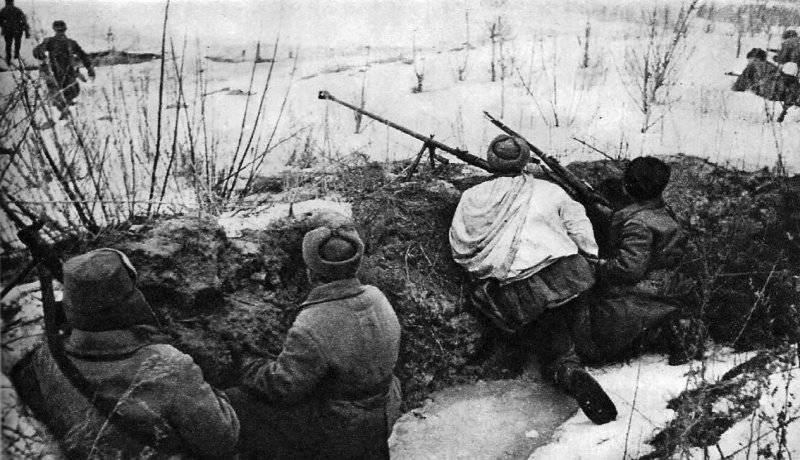
Which is typical, in the German memoirs, a rather high assessment is given of the training of the Soviet infantry, especially its defense activities, while in the 41-42 period. its offensive capabilities, on the contrary, are rated very low, and this is understandable - all offensive operations of that period ended sadly for the Red Army, but our infantrymen defended, on the contrary, very steadfastly even in the most hopeless situation. This is what the German general Kurt Tippelskirkhir wrote in his memoirs about our soldier: “Russians kept with unexpected firmness and perseverance even when they were bypassed and surrounded. By doing so, they were gaining time and making more and more new reserves for counterattacks from the depths of the country, which, moreover, were stronger than it was supposed ... the enemy showed an absolutely incredible ability to resist. "
It was thanks to the courage and perseverance on the battlefields that the Soviet infantry soldier managed to overcome in the fiercest battles of one of the strongest opponents of the time, the infantry of the German Wehrmacht.
Information